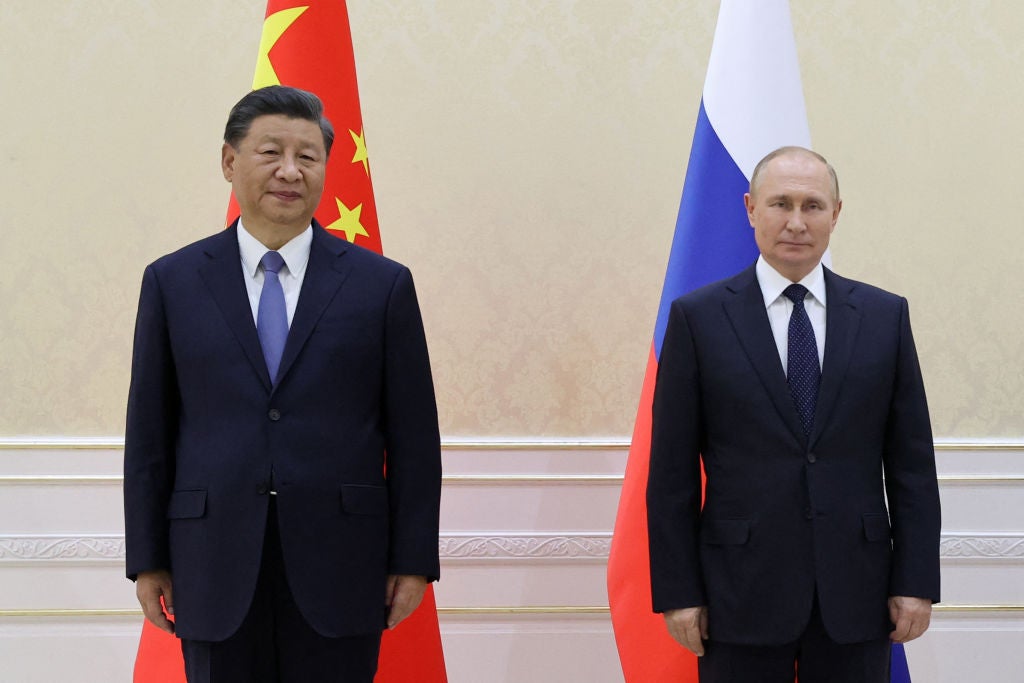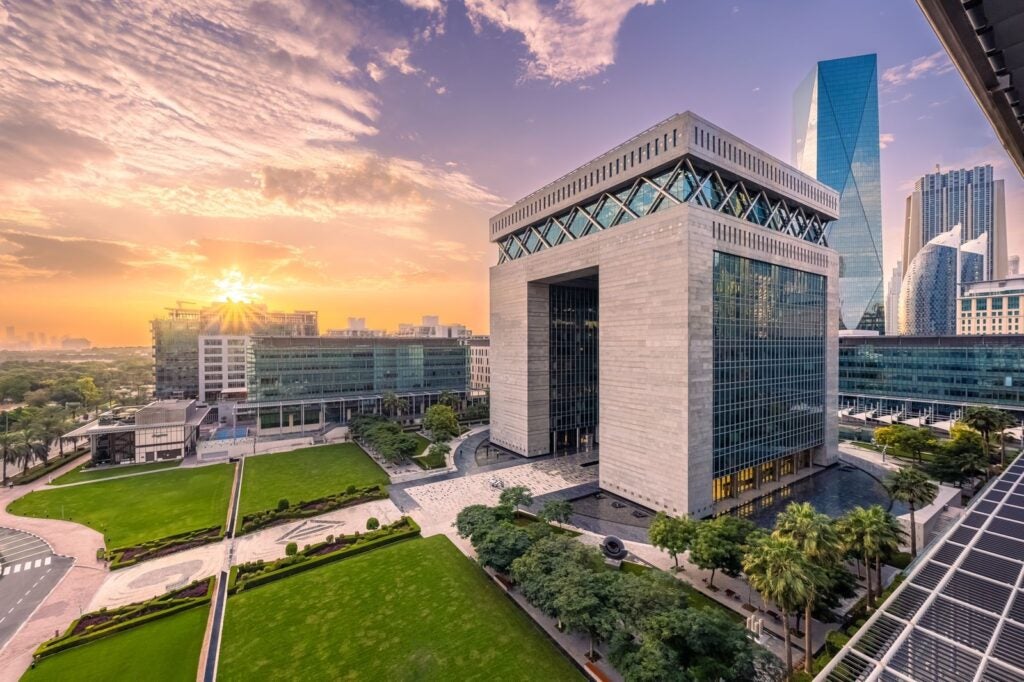
Amid the global economic problems encountered in 2022, greenfield foreign direct investment (FDI) project numbers are expected to be higher than in 2021. Our provisional estimates put the number of FDI projects recorded in 2022 at 5–10% higher than those recorded in 2021. However, the tough economic conditions should see FDI levels fall in 2023, with the first half of the year more impacted.
Key FDI forecasts include:
How well do you really know your competitors?
Access the most comprehensive Company Profiles on the market, powered by GlobalData. Save hours of research. Gain competitive edge.

Thank you!
Your download email will arrive shortly
Not ready to buy yet? Download a free sample
We are confident about the unique quality of our Company Profiles. However, we want you to make the most beneficial decision for your business, so we offer a free sample that you can download by submitting the below form
By GlobalData- Global inflation will begin to improve but will impact FDI levels in the first half of 2023.
- The ongoing war in Ukraine will continue to present global economic pressures.
- Economic conditions will cause several countries to enter a recession, which will negatively impact FDI.
- The rebalancing of trade and investment partners will become clearer in 2023 – friendshoring, energy redistribution, restructuring of Russian operations and the tech industry will be major themes.
- Asian countries will continue to benefit from China’s decline in inward FDI.
- Countries with high economic growth expectations in 2023 will be hoping to convert to increased FDI levels.
Inflation will begin to subside but cause damage to the investment climate
The International Monetary Fund (IMF) expects world inflation to fall from 8.8% in 2022 to 6.5% in 2023. This suggests the peak rise in prices is over for many countries. However, the damage caused could be further felt in 2023. A survey by Ipsos says inflation is the number one concern for people globally.
China and European countries are expected to have more of a hard landing. European powerhouses such as the UK and Germany are expected to enter recession in early 2023, having seen some of their highest inflation levels for decades.
Investor sentiment has also cooled on China. However, the US is expected to have a softer landing given its ability to control inflation at an early stage (summer 2022) compared with its European counterparts. This could be significant given the US’s prominence as a leading inbound and outbound FDI location.
With economic growth struggling, many businesses may lean towards consolidation rather than expansion, at least in the first half of 2023. This will likely negatively impact FDI levels in early 2023. According to our data, the number of FDI projects will increase in 2022. Therefore, our expectation is that we will see a smoothing or lowering of investment volumes in 2023.
Countries are experiencing different levels of inflation. Zimbabwe ‘s inflation rate has reached around 250%, while Japan’s prices rose by 'only' 3.8% in November 2022. Those with higher inflation rates will find it more difficult to attract investment in 2023.
Continued pressures caused by Russia’s invasion of Ukraine
Russia’s invasion of Ukraine has not only decimated Ukraine’s economy but has also sent shockwaves across the global economy. Russia and Ukraine’s trade has fallen, leading to rising prices levels. Although the initial impact was in oil, gas, cereals and steel, it spread quickly across several industries. In addition to inflationary pressures, the supply chain issues initially caused by Covid-19 still linger. Although we predict the supply chain pressures to somewhat ease in 2023, they will still impact business decisions. If companies continue to regionalise their supply chains this can either be good for FDI – creating more operations abroad – or bad for FDI – closing operations further afield and rebasing closer to home.
Regardless, the length of the war will impact the global economy (and therefore FDI) in 2023.
Risks of recession
The IMF predicts that 20 countries will have real GDP growth of less than 1% in 2023, the majority of which will enter a recession at some point in the year. Positive growth is most likely only expected towards the second half or fourth quarter of 2023 for those countries listed in the table below.
This could lead to difficult FDI conditions for these countries. We predict that investors will adopt a more cautious approach, with FDI levels falling particularly in the first half of 2023. However, we do expect FDI levels to pick up in the second half of the year, assuming the economic conditions improve.
Rebalancing of FDI and global relationships
Friendshoring
Canada’s Finance Minister, Chrystia Freeland, noted the global economy is entering a "period of friendshoring – a time when our democratic partners and their most important companies are looking to shift their dependence from dictatorships to democracies". She discussed how Canada can play an important role in fulfilling gaps in the trade of countries that are exposed to the war in Ukraine. This is particularly true in areas where Canada has an abundance of natural resources.
This is not something unique to Canada, nor for trade. In 2022, we began to see signs of FDI friendshoring. Take the US, for example; in 2022, its outbound FDI towards China almost halved, while investment into Russia was down by almost 100%. However, it ramped up FDI projects in other Asian countries that are more friendly towards the US. India, Malaysia, the Philippines, Taiwan and Vietnam witnessed a significant rise in US outbound investment. Similarly in eastern Europe and the Commonwealth of Independent States (CIS), US companies notably turned to Poland and Armenia in lieu of Russia. The US also maintains friendly relations with more traditional allies, with countries such as the UK, Mexico, Canada and Germany among its top FDI partners.
We expect FDI friendshoring to scale up in 2023.
Impact of energy demand and supply
The impact of the war in Ukraine has caused many European energy companies to reduce their reliance on Russia. This has presented opportunities for renewable energy companies to expedite the consumer switch from non-renewable to renewable energy. Additionally, other countries such as the US are happily stepping in to provide energy to countries instead of Russia.
In FDI terms, renewable energy has been one of only a few sectors to show consistent growth in project numbers since 2019. Project numbers grew annually by 39% in 2021 and will grow further in 2022. The overreliance on Russia also presents opportunities for a geographic rebalancing of the energy market. The US is expected to further grab investor attention for both renewable and non-renewable investment in 2023, particularly after establishing its Inflation Reduction Act in 2022.
Restructuring of Russian FDI
Hundreds of companies are moving operations out of Russia, presenting opportunities for other countries to attract these investors to relocate in their jurisdiction.
In April 2022, Wargaming, a Minsk-based video game company, announced it was closing operations in Belarus and Russia. The company’s restructuring meant it opened two new studios in Poland and Serbia.
In June 2022, Nokian Tyres announced a new passenger car tyre factory in Romania. The company detailed it would invest €650m ($696.91m) and create around 500 jobs. The company’s board said it was closing its Russian operations but was keen to maintain a presence in eastern Europe.
Russia’s inbound FDI levels plummeted in 2022. We estimate they will be around 75% lower than in 2021. For perspective, in 2019, Russia ranked second behind Poland as the most popular FDI destination within central eastern Europe and the CIS. Now, it ranks 17th. Armenia has already seen a 500% increase in FDI projects in 2022, and many are relocating employees from Russia.
In 2023, we expect a continued restructuring of Russia operations by companies, with neighbouring countries benefitting the most.
Tech layoffs
The Big Tech layoffs in 2022 may have some investment promotion agencies concerned about the tech market in 2023. Given the worrying economic outlook, Big Tech companies may look to consolidate in 2023. That said, we expect the tech sector to comfortably remain the leading FDI sector in 2023. However, it may require some strategic reassignment – potentially looking to attract smaller (rather than large) projects.
There are still several tech areas that will continue to drive FDI in 2023 and beyond. These include AI, blockchain, cloud computing, cybersecurity, the internet of things, quantum computing and robotics.
Additionally, 5G, batteries, cybersecurity, digitalisation, emission reduction, mobile and supply chains will be key themes for FDI in 2023.
China’s loss is other Asian countries' gain
China’s FDI decline in 2022 is notable. Increased production costs, supply chain issues, overreliance risk, Covid-19 lockdowns and geopolitical tensions are key reasons behind this fall. Provisional data from our FDI Projects Database indicates the number of FDI projects into China will fall by 10–15% in 2022. Although this may recover slightly in 2023, particularly in the second half of the year, investors are more likely to continue to invest in neighbouring countries. Our analysis suggests the number of FDI projects into Asia increased in 2022 and passed pre-Covid levels for the first time.
India will record its highest-ever number of FDI projects in 2022 and will rank as the third-largest destination country in the world. The Philippines, Malaysia, Vietnam and Taiwan will also post significant increases in FDI. Furthermore, the majority of Asian countries will experience upturns.
With positive economic growth expected in Asia in 2023 and China’s continued economic pressures, the 2022 data could be indicative of a new rebalancing of FDI in the region.
Countries to watch
Several African countries rank highly in terms of expected real GDP growth in 2023. Countries such as Senegal and Ivory Coast, in the west of Africa, are expected to grow by 8.1% and 6.5%, respectively. This should correlate to increased investor attention. To the east, Tanzania and Kenya are key markets to keep an eye on. While Rwanda, Uganda and Democratic Republic of Congo are other notable Africa markets expecting a good year for FDI.
In addition to those countries mentioned above, there are many other nations that can look ahead with optimism in 2023. In the Middle East, Qatar will be looking to build on its successful hosting of the FIFA World Cup by converting the world’s attention into FDI projects. Qatar has seen a dramatic rise in inbound FDI in the past couple of years. Its neighbour, Saudi Arabia, will also be expecting to continue its recent upturn. Both countries will continue their diversification from oil and gas to service-based investments.
Generally, we expect investors to take a more cautious approach to FDI, at least in the first half of 2023. An improvement in global economic conditions is essential to pull FDI flows back on track. Non-greenfield forms of FDI such as mergers and acquisitions may prosper in 2023 with companies on the lookout to capitalise on falling company valuations. The dampened outlook may also cause other key FDI concerns of previous years, such as sustainability and ESG, to take a step back in 2023, at least until other key concerns such as inflation are addressed.








